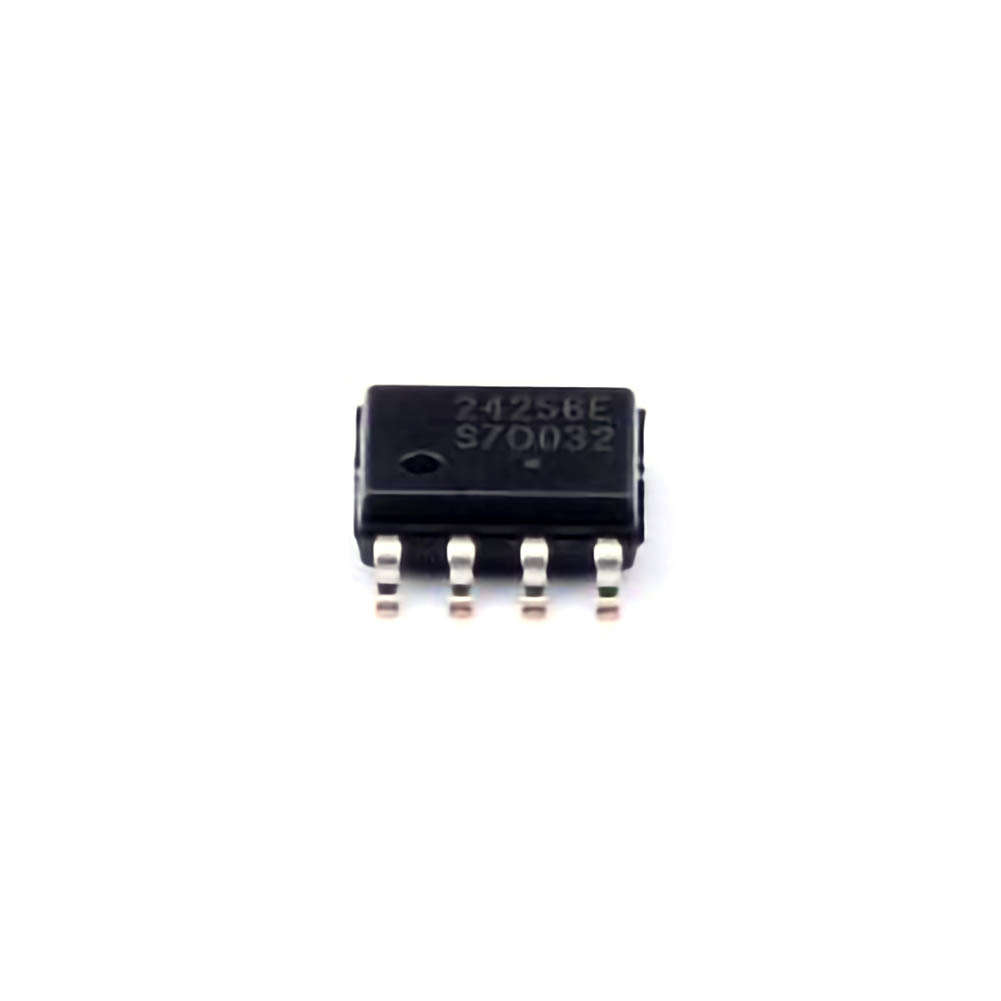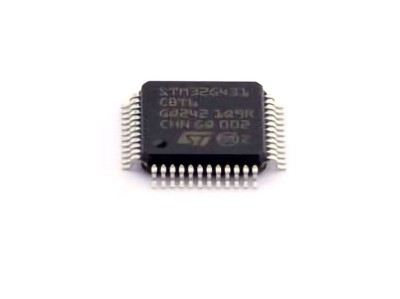
In this article, we delve into the application and programming implementation of the CAT24C256WI-GT3 , a versatile 256Kb (32K x 8) I2C-based EEPROM. The focus is on how this Memory chip is integrated into various data storage systems, its programming techniques, and its advantages in modern data storage solutions. Whether you're an engineer, student, or hobbyist, this article provides a comprehensive guide to understanding the role of the CAT24C256WI-GT3 in data storage Modules .
CAT24C256WI-GT3, I2C EEPROM, data storage, memory module , EEPROM programming, embedded systems, memory chip, data logging, microcontroller integration, embedded applications
Introduction to the CAT24C256WI-GT3 and Its Features
The ever-growing need for reliable, efficient, and compact memory solutions is pushing the boundaries of embedded systems and data storage technologies. Among the various options available, the CAT24C256WI-GT3 stands out as a Power ful and flexible solution for applications requiring non-volatile memory. With its I2C interface and 256Kb of storage, the CAT24C256WI-GT3 is ideal for a range of embedded applications such as data logging, firmware storage, and real-time configuration data storage.
Understanding the CAT24C256WI-GT3
The CAT24C256WI-GT3 is a 256K-bit (32K x 8) EEPROM ( Electrical ly Erasable Programmable Read-Only Memory) device, manufactured by ON Semiconductor. It offers non-volatile data storage, which means that once data is written to the memory, it remains intact even if power is lost. This feature makes it particularly useful in systems where maintaining data integrity is critical.
The CAT24C256WI-GT3 communicates with microcontrollers or other embedded systems via the I2C (Inter-Integrated Circuit) protocol, a popular and easy-to-implement communication standard. It features a low-voltage operation (1.7V to 5.5V), making it compatible with a wide variety of microcontrollers and processors. The chip supports multiple memory blocks and is capable of storing a considerable amount of data within a relatively small form factor.
Key Features of CAT24C256WI-GT3:
Memory Capacity: 256 Kbits (32K x 8 bits).
Interface: I2C communication, making it suitable for systems with multiple devices on the same bus.
Data Retention: Retains data for up to 100 years, making it ideal for long-term storage needs.
Low Power Consumption: Suitable for battery-powered applications.
Page Write Support: Allows for writing up to 64 bytes of data in a single operation, improving efficiency in bulk data storage.
Applications of CAT24C256WI-GT3
This EEPROM device is particularly effective for applications requiring small data storage but with a high level of reliability. Common applications include:
Data Logging: Storing sensor data in embedded systems like environmental monitoring or medical devices.
Device Configuration Storage: Keeping configuration settings in embedded systems or consumer electronics.
Firmware Storage: Used in microcontroller-based systems to store bootloader code or other critical firmware.
Calibration Data Storage: Used in systems where precise calibration data must be retained across power cycles.
The ease of integration with I2C communication and its small footprint make the CAT24C256WI-GT3 a popular choice for embedded developers and engineers.
Why Choose the CAT24C256WI-GT3?
The primary benefit of the CAT24C256WI-GT3 lies in its combination of flexibility, reliability, and low power usage. By leveraging I2C, developers can integrate the chip with a wide range of systems, without needing additional resources for a parallel or SPI-based interface. Its ability to store up to 32K words of data, combined with simple programming techniques, provides a robust solution for many memory storage needs.
Moreover, the low voltage operation and long data retention capabilities make it suitable for use in battery-powered devices where conserving energy is essential. The CAT24C256WI-GT3’s low power consumption and minimal space requirements make it an ideal fit for portable embedded systems.
Programming the CAT24C256WI-GT3 and Implementation in Data Storage Modules
After understanding the basic features and applications of the CAT24C256WI-GT3, the next logical step is to explore how to integrate this EEPROM into real-world data storage systems. This section focuses on programming the CAT24C256WI-GT3, as well as its implementation in typical data storage modules.
I2C Protocol Overview for Programming the CAT24C256WI-GT3
The I2C (Inter-Integrated Circuit) protocol is a serial communication protocol developed by Philips, designed to facilitate communication between multiple devices over a two-wire bus. The CAT24C256WI-GT3 utilizes this protocol to communicate with microcontrollers and other devices. The I2C bus consists of two lines:
SDA (Serial Data Line): Carries the data being transmitted between devices.
SCL (Serial Clock Line): Controls the timing of data transmission.
Each device connected to the I2C bus is identified by a unique address. For the CAT24C256WI-GT3, the default I2C address is usually 0xA0 (for writing) or 0xA1 (for reading), though it can vary based on the configuration of the address pins.
Programming the CAT24C256WI-GT3
To communicate with the CAT24C256WI-GT3, microcontrollers like the Arduino or Raspberry Pi can be used. Here's a basic outline of how to implement the I2C protocol to interact with this EEPROM.
Initialization: Set up the I2C communication interface on your microcontroller. This involves selecting the correct pins for SDA and SCL, configuring the clock speed (usually 100kHz or 400kHz), and initializing the communication protocol.
Writing Data:
Writing data to the CAT24C256WI-GT3 involves sending the memory address along with the data you wish to store. The memory address is split into two parts: the high byte and the low byte. Here’s an example of writing data to a memory location:
Send the device address (e.g., 0xA0).
Send the high byte of the memory address (e.g., 0x00).
Send the low byte of the memory address (e.g., 0x10).
Send the data byte(s) you wish to store.
You can write up to 64 bytes of data in a single page write operation.
Reading Data:
To read data from the EEPROM, the process is similar, except the microcontroller sends the read command. The typical read process involves:
Send the device address (e.g., 0xA0) followed by the memory address.
Then, issue a read command to fetch the data, and the microcontroller receives the bytes sent by the EEPROM.
Handling Errors:
The I2C protocol includes built-in mechanisms for error detection, such as acknowledging each byte transmitted. It is essential to implement error handling to detect communication failures or corrupted data.
Optimizing Data Storage with CAT24C256WI-GT3
When using the CAT24C256WI-GT3 in data storage modules, there are several best practices to consider:
Efficient Memory Usage: Divide your storage needs into blocks or pages to maximize efficiency. Since the CAT24C256WI-GT3 supports page writes of up to 64 bytes, it’s important to manage your data in multiples of this size for optimal performance.
Data Integrity: Use CRC (Cyclic Redundancy Check) or other error-checking methods to ensure that data written to the EEPROM is not corrupted during the write or read operations.
Power Management : Since the CAT24C256WI-GT3 is designed for low power consumption, it is ideal for battery-operated applications. Implementing power-down modes in the microcontroller when not writing or reading data can further extend battery life.
Wear-Leveling: EEPROMs have a limited number of write cycles, and continuous writing to the same location can wear out the chip over time. To mitigate this, use wear-leveling techniques to distribute writes evenly across different memory locations.
Real-World Implementation in Data Storage Modules
One example of using the CAT24C256WI-GT3 in a real-world scenario is in a data logging system. Data logging systems often need to store sensor data or other measurement results in a non-volatile memory for later retrieval and analysis. The CAT24C256WI-GT3 can serve as an ideal solution for such systems, offering the following advantages:
Compact Design: The small physical size of the chip makes it suitable for space-constrained environments.
Long-Term Storage: With a data retention period of up to 100 years, it is a reliable choice for applications where data longevity is crucial.
Low Power: Perfect for low-power applications such as environmental monitoring stations or portable devices powered by batteries.
In such systems, the microcontroller collects data from sensors and writes it to the CAT24C256WI-GT3 in intervals. The data can then be read back when needed, without worrying about data loss due to power interruptions.
Conclusion
The CAT24C256WI-GT3 is a versatile and reliable EEPROM chip that offers a variety of benefits for embedded systems and data storage applications. Its use of the I2C protocol, along with its efficient power consumption and long data retention, make it an excellent choice for a wide range of applications. By understanding the key features of the chip, implementing efficient programming techniques, and optimizing data storage, developers can harness the full potential of the CAT24C256WI-GT3 to build robust and reliable data storage modules.
As embedded systems continue to evolve, memory solutions like the CAT24C256WI-GT3 will remain at the forefront, enabling developers to create innovative solutions for data logging, configuration storage, and firmware management across diverse industries. Whether you're working on a personal project or a large-scale commercial system, the CAT24C256WI-GT3 provides a powerful and cost-effective memory solution that meets the demands of modern applications.
If you are looking for more information on commonly used Electronic Components Models or about Electronic Components Product Catalog datasheets, compile all purchasing and CAD information into one place.


